 To enhance service speed and avoid tariff delays, we've opened a US warehouse. All US orders ship directly from our US facility.
To enhance service speed and avoid tariff delays, we've opened a US warehouse. All US orders ship directly from our US facility.
| Cat. No. | Product Name | Field of Application | Chemical Structure |
|---|---|---|---|
| DC70747 | RTI-7470-44 Featured |
RTI-7470-44 is a highly potent and selective antagonist of the human trace amine-associated receptor 1 (hTAAR1), demonstrating an IC50 of 8.4 nM in an in vitro cAMP functional assay. In radioligand binding studies, it exhibits a Ki value of 0.3 nM, highlighting its strong affinity for hTAAR1. Notably, RTI-7470-44 shows significant species selectivity, with over 90-fold preference for hTAAR1 compared to its rat and mouse counterparts. This compound also possesses favorable pharmacokinetic properties, including good blood-brain barrier penetration, moderate metabolic stability, and a promising off-target safety profile. In electrophysiological studies, RTI-7470-44 enhanced the spontaneous firing rate of dopaminergic neurons in the mouse ventral tegmental area (VTA) and effectively counteracted the effects of the TAAR1 agonist RO5166017.
More description
|

|
| DC53045 | STM2457 Featured |
STM2457 is currently available in stock and ready for immediate shipment. It is a highly effective inhibitor targeting the catalytic activity of METTL3/METTL14, with an IC50 value of 16.9 nM and a Kd value of 1.4 nM. This compound exhibits exceptional specificity for METTL3 and demonstrates notable anti-leukaemic properties.
More description
|
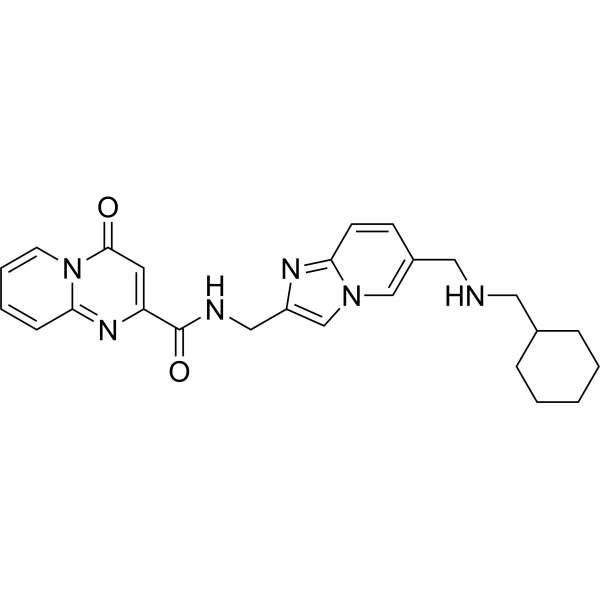
|
| DC73281 | YEATS4 binder 4e Featured |
YEATS4 binder 4e stands out as a highly potent and selective small-molecule inhibitor targeting the epigenetic reader YEATS4. It demonstrates a strong binding affinity with a Ki value of 37 nM. Importantly, this compound exhibits remarkable selectivity, showing over 15-fold preference for YEATS4 compared to other members of the YEATS family, including YEATS1, YEATS2, and YEATS3.
More description
|

|
| DC10988 | LTX-401 Featured |
LTX-401 is a novel oncolytic amino acid derivative that specifically targets the Golgi apparatus, demonstrating significant potential in cancer therapy. In vitro studies reveal that LTX-401 effectively reduces the viability of various tumor cell lines, exhibiting cytotoxic activity across a range of concentrations. Notably, it shows the highest potency against the human malignant melanoma cell line MDA-MB-435S (IC50 = 13.5 μM) and the lowest activity against the human hepatocellular carcinoma cell line HEPG2 (IC50 = 35.4 μM). For other cell lines, the IC50 values fall within a narrow range of 19-32 μM. Importantly, LTX-401 does not induce hemolysis in red blood cells at concentrations effective for cancer cell death, with hemolytic activity only observed at much higher concentrations (400 μg/mL = 1087 μM). Additionally, LTX-401 demonstrates cytotoxicity against non-malignant cell lines, including HUV-EC-C endothelial cells, HaCat keratinocytes, and MRC-5 fibroblasts, suggesting a broad but selective mechanism of action.
More description
|
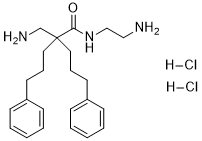
|
| DCC0219 | 3-brop Featured |
Prodrug of the glycolysis inhibitor 3-bromopyruvate (3-BrPA) which targets hexokinase II (HK2) and GAPDH
More description
|
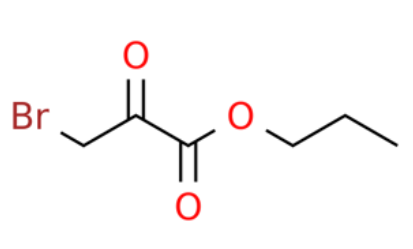
|
| DC8914 | Indacaterol Featured |
Indacaterol is a potent, orally administered ultra-long-acting β2 adrenergic receptor (ADRB2) agonist, widely recognized for its therapeutic potential in respiratory and cardiovascular conditions. By selectively activating ADRB2, indacaterol not only enhances bronchodilation but also exhibits a unique mechanism of action by inhibiting NF-κB activity in a β-arrestin2-dependent manner. This dual functionality helps mitigate lung inflammation, prevent further pulmonary damage, and improve lung function in patients with chronic obstructive pulmonary disease (COPD). Beyond its respiratory applications, indacaterol has also emerged as a valuable tool in cardiovascular disease research, offering insights into its broader therapeutic effects. Its multifaceted pharmacological profile positions indacaterol as a promising candidate for addressing complex disease mechanisms and advancing treatment strategies in both respiratory and cardiovascular fields.
More description
|

|
| DC41699 | FSLLRY-NH2 Featured |
FSLLRY-NH2 is a protease-activated receptor 2 (PAR2) inhibitor.
More description
|

|
| DC50040 | GNF-PF-3777 (8-Nitrotryptanthrin) Featured |
GNF-PF-3777 (8-Nitrotryptanthrin) is a potent human indoleamine 2,3-dioxygenase 2 (hIDO2) inhibitor which significantly reduces IDO2 activity with Ki of 0.97 μM.
More description
|

|
| DC11375 | KRIBB3 Featured |
KRIBB3 is an Hsp27 and microtubule inhibitor that inhibits migration and invasion of MDA-MB-231 cells in vitro in an Hsp27-dependent manner.
More description
|
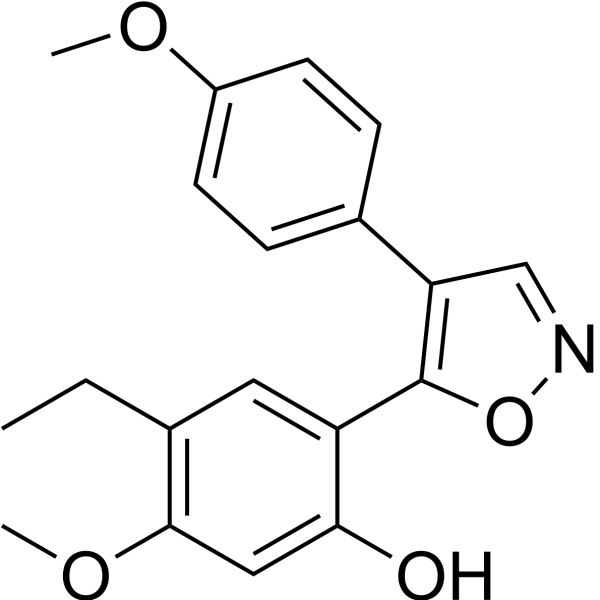
|
| DC22085 | Tasurgratinib(E7090) Featured |
E7090 (E 7090) is a highly potent and selective orally bioavailable inhibitor targeting FGFR1, FGFR2, and FGFR3, with IC50 values of 0.71 nM, 0.50 nM, and 1.2 nM, respectively. It exhibits significantly weaker inhibition of FGFR4, with an IC50 of 120 nM. This distinct selectivity profile positions E7090 as a promising therapeutic candidate for diseases driven by aberrant FGFR1-3 signaling, offering a targeted approach to inhibit these receptors while minimizing off-target effects on FGFR4. Its oral availability further enhances its potential as a convenient and effective treatment option for patients with FGFR-dependent conditions.
More description
|

|
| DC48364 | Sovleplenib Featured |
Sovleplenib is a highly potent inhibitor of spleen tyrosine kinase (Syk), derived from the innovative research disclosed in patent WO2012167733 A1. This compound demonstrates significant potential in modulating Syk-mediated signaling pathways, offering a promising therapeutic approach for conditions where Syk activity plays a critical role. Its development underscores the ongoing advancements in targeted kinase inhibition, providing a valuable tool for both research and potential clinical applications in immune-related and inflammatory diseases.
More description
|

|
| DC20200 | TP0427736 Featured |
TP0427736 is a highly selective inhibitor of ALK5, demonstrating potent activity with an IC50 of 2.72 nM. It effectively suppresses Smad2/3 phosphorylation in A549 cells, highlighting its ability to modulate TGF-β signaling pathways. Additionally, TP0427736 has been shown to reduce the growth inhibition of human outer root sheath cells, suggesting its potential therapeutic utility in conditions where ALK5-mediated signaling plays a critical role. This compound represents a promising tool for investigating ALK5-related biological processes and developing targeted treatments for diseases involving aberrant TGF-β signaling.
More description
|
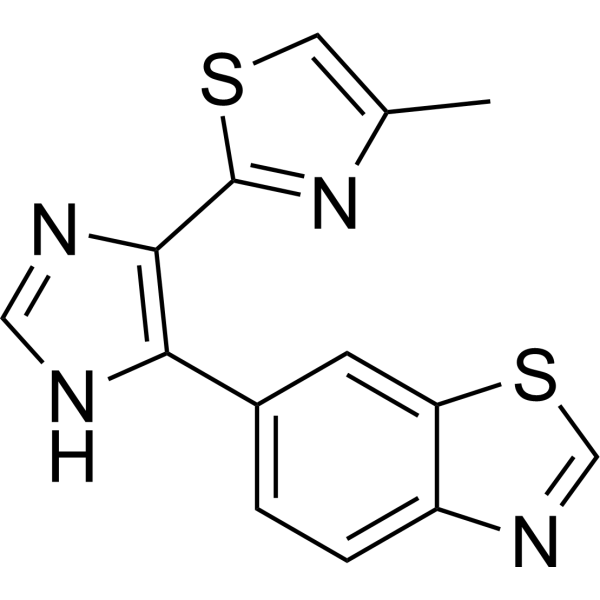
|
| DC73757 | NCATS-SM7270 Featured |
NCATS-SM7270 is a highly specific small molecule inhibitor of NADPH oxidase 2 (NOX2), exhibiting an IC50 value of 2.1 µM in polymorphonuclear leukocytes (PMN). It effectively inhibits NOX2 activity in both primary human and mouse granulocytes, demonstrating its targeted and potent mechanism of action.
More description
|

|
| DC74398 | HSL119 Featured |
HSL119 is a highly effective and selective inhibitor of hormonally upregulated neu-associated kinase (HUNK), demonstrating complete suppression of HUNK kinase activity at a concentration of 1 µM in biochemical assays. This compound highlights its precision and potency in targeting HUNK.
More description
|

|
| DC74445 | FL-1607 Featured |
FL-1607, a novel Fam20C inhibitor, has shown remarkable anti-proliferative effects in triple-negative breast cancer (TNBC) cells. This compound induces apoptosis and significantly reduces the migration ability of MDA-MB-468 cells, underscoring its potential as a promising therapeutic agent for TNBC treatment.
More description
|

|
| DC70591 | mCLB073 Featured |
mCLB073 is an advanced, orally active small molecule agonist specifically designed to target Mtb adenylyl cyclase Rv1625c. As an optimized derivative of V-59, it demonstrates significantly enhanced potency and efficacy for in vivo applications. In cholesterol-based media, mCLB073 shows a remarkable 17-fold increase in activity against Mtb compared to its predecessor, V-59, while retaining favorable pharmacokinetic characteristics and a strong safety profile. In preclinical studies, oral administration of mCLB073 at 30 mg/kg led to a substantial reduction in Mtb colony-forming units (CFUs) in the lungs of mice, accompanied by a 45% decrease in lung pathology severity. These findings highlight its potential as a promising therapeutic candidate for tuberculosis treatment.
More description
|
.gif)
|
| DC8604 | Pim-1 Inhibitor 2 |
PIM1-IN-2 is a highly effective and ATP-competitive inhibitor of Pim-1, demonstrating a Ki value of 91 nM. Unlike traditional inhibitors, it interacts with the ATP-binding kinase hinge region without relying on the formation of standard hydrogen bonds, showcasing a unique mechanism of action. This distinctive approach highlights its potential as a promising therapeutic agent.
More description
|

|
| DC71716 | Obeldesivir (GS-5245, ATV006) Featured |
ATV006 is a potent, orally active antiviral agent and ester prodrugs of GS-441524. ATV006 inhibits the replication of SARS-CoV-2 and its variants. ATV006 can be used for SARS-CoV-2 research.
More description
|

|
| DC40103 | Sphingosine-1-phosphate Featured |
Sphingosine-1-phosphate (S1P) functions as a versatile signaling molecule, acting both intracellularly and extracellularly. Within cells, it serves as a secondary messenger, playing a key role in calcium ion (Ca²⁺) mobilization. Externally, S1P acts as a ligand, binding to and activating a range of G protein-coupled receptors, including S1P1-5 receptors as well as GPR3, GPR6, and GPR12. This bioactive lipid is synthesized from sphingomyelin and other membrane phospholipids, highlighting its importance as a critical mediator in various cellular processes.
More description
|
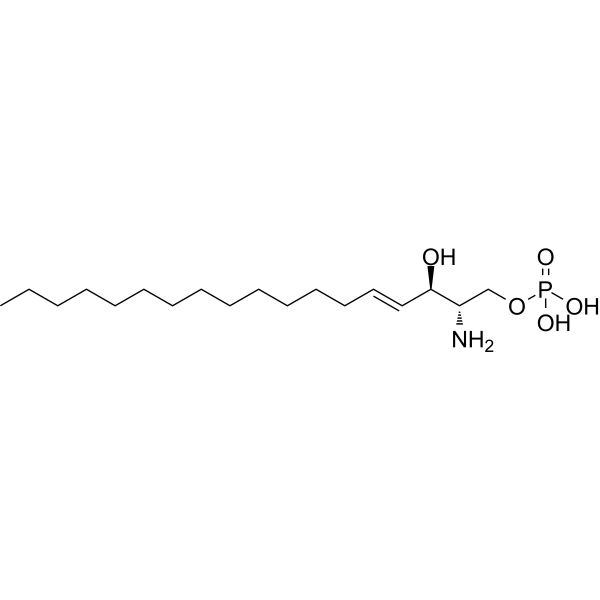
|
| DC40969 | N-β-alanyldopamine hydrochloride Featured |
N-β-alanyldopamine hydrochloride, commonly referred to as NBAD hydrochloride, stands as the primary dopamine derivative found in haemolymph.
More description
|
.gif)
|
| DC32320 | Alagebrium Chloride Featured |
Alagebrium Chloride, identified as ALT711, emerged as a pioneering pharmaceutical candidate developed by Alteon, Inc. It marked the first clinical attempt to address the crosslinks formed by advanced glycation endproducts (AGEs), a key factor in the aging process. By targeting and disrupting these crosslinks, Alagebrium aims to counteract the stiffening of blood vessel walls, a condition linked to hypertension, cardiovascular disorders, and various age-related degenerative issues caused by protein crosslinking. Clinical studies have demonstrated its efficacy in lowering systolic blood pressure and offering therapeutic advantages for individuals with diastolic dysfunction.
More description
|
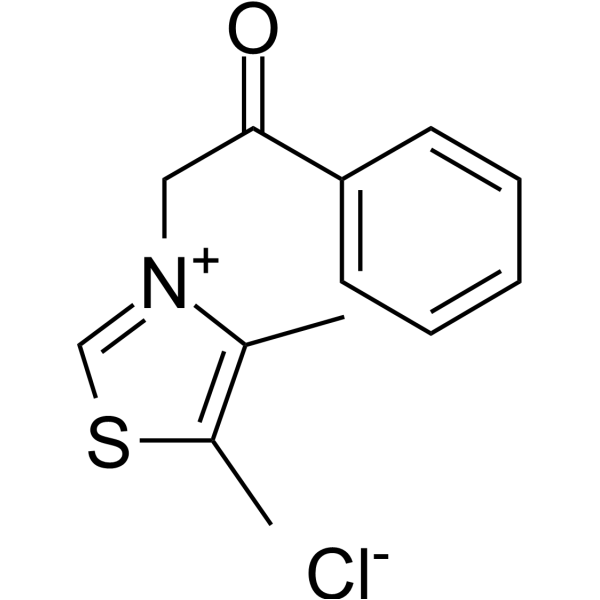
|
| DC72536 | Pemvidutide Featured |
Pemvidutide is a dual agonist targeting both GLP-1R and GCGR, demonstrating significant efficacy in reducing body weight, liver fat content, and serum lipid levels. Its unique mechanism of action makes it a promising candidate for research and therapeutic development in conditions such as non-alcoholic steatohepatitis (NASH) and obesity. This innovative compound offers potential for addressing complex metabolic disorders with a multifaceted approach.
More description
|

|
| DC70523 | JNJ-28583113 Featured |
JNJ-28583113 (JNJ28583113) a potent, selective, brain penetrant TRPM2 antagonist with IC50 of 126 nM (hTRPM2).JNJ-28583113 shows similar potency against species chimpanzee and rat TRPM2 with IC50 of 100 and 25 nM, respectively.JNJ-28583113 shows no significant (IC50>10 uM) reactivity towards PARP or PARG and a panel for multiple known kinases GPCRs and ion channels, nine other TRP channels with exception of TRPM5 (IC50<1 uM).Blocking TRPM2 via JNJ-28583113 caused phosphorylation of GSK3α and β subunits in cell assays.JNJ-28583113 also protected cells from oxidative stress induced cell death as well as morphological changes induced by non-cytotoxic concentrations of H2O2。JNJ-28583113 blunted cytokine release in response to pro-inflammatory stimuli in microglia.JNJ-28583113 was brain penetrant but not suitable for systemic dosing as it was rapidly metabolized in vivo, but the in-vitro pharmacology of JNJ-28583113 is the best in class.
More description
|

|
| DC31184 | Idoxuridine Featured |
Idoxuridine is an anti-herpesvirus antiviral and anticancer drug. It is a nucleoside analogue, a modified form of deoxyuridine, similar enough to be incorporated into viral DNA replication, but the iodine atom added to the uracil component blocks base pairing. It is used only topically due to cardiotoxicity. It was synthesized by William Prusoff in the late 1950s. Initially developed as an anticancer drug, idoxuridine became the first antiviral agent in 1962.
More description
|

|
| DC32287 | Pinostrobin Featured |
Pinostrobin is a flavonoid with diverse biological activities, including antioxidant, anti-inflammatory, and anticancer properties. Pinostrobin is a dietary bioflavonoid discovered more than 6 decades ago in the heart-wood of pine (Pinus strobus). Pinostrobin has depicted many pharmacological activities including anti-viral, anti-oxidant, anti-leukaemic, anti-inflammatory and anti-aromatase activities. It is an inhibitor of sodium channel and Ca(2+) signalling pathways and also inhibits intestinal smooth muscle contractions.
More description
|

|
| DC33104 | DL-0108 Featured |
Pinocembrin, also known as DL-0108, is an androgen receptor ligand potentially for the treatment of acute stroke.
More description
|

|
| DC46930 | Sunvozertinib Featured |
Sunvozertinib is a potent inhibitor targeting the ErbB family of receptor tyrosine kinases, including EGFR (Epidermal Growth Factor Receptor) and Her2 (Human Epidermal Growth Factor Receptor 2), as well as BTK (Bruton's Tyrosine Kinase). It exhibits particularly strong activity against mutant forms of these kinases, which are often associated with resistance to existing therapies in cancers such as non-small cell lung cancer (NSCLC).
The IC50 values (half-maximal inhibitory concentr.
More description
|

|
| DC21314 | ML316 Featured |
ML316 is a specific antifungal agent that fungal-selectively inhibits the mitochondrial phosphate carrier Mir1, exhibits potent antifungal activity against the moderatelyazole-resistant C. albicans strain CaCi-2 with MIC of 0.05 ug/ml.
More description
|
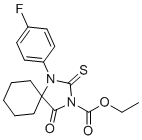
|
| DC23024 | N-65828 Featured |
NCI-65828 (designated as N 65828,NSC-65828) is a small-molecule inhibitor targeting angiogenin (ANG), a protein critical for angiogenesis and cellular proliferation. Its therapeutic potential stems from selective suppression of ANG's ribonucleolytic function, a biochemical activity essential for mediating downstream biological effects. By disrupting ANG's enzymatic capacity to cleave RNA substrates, NCI-65828 attenuates the protein's pro-angiogenic signaling pathways.
Preclinical evaluations highlight its multifaceted antitumor properties. In vitro studies using diverse cancer cell models—including bladder carcinoma (T24; IC₅₀ = 1.3 ± 0.5 μM), cervical adenocarcinoma (HeLa; IC₅₀ = 1.9 ± 0.4 μM), and urothelial carcinoma (UROtsa; IC₅₀ = 3.2 ± 0.8 μM)—demonstrate dose-dependent antiproliferative effects, with potency variations reflecting tissue-specific sensitivity. Parallel experiments in human umbilical vein endothelial cells (HUVECs) reveal significant inhibition of capillary-like tube formation, confirming its antiangiogenic efficacy in disrupting endothelial morphogenesis.
Notably, in vivo investigations using transgenic murine models demonstrate that NCI-65828 effectively suppresses the development of prostatic intraepithelial neoplasia (PIN) lesions. Mechanistic analysis indicates this activity arises from direct enzymatic inhibition rather than interference with ANG's intracellular trafficking, as nuclear translocation remains unaffected—a distinguishing feature that differentiates it from other ANG-targeted agents. This selective mode of action positions NCI-65828 as a precision tool for studying ANG-dependent pathologies.
More description
|
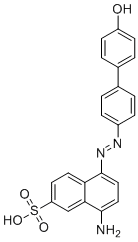
|
| DC49987 | 5β-Cholanic acid Featured |
5β-Cholanic acid can be used for 5β-Cholanic acid derivatives synthesis.
More description
|
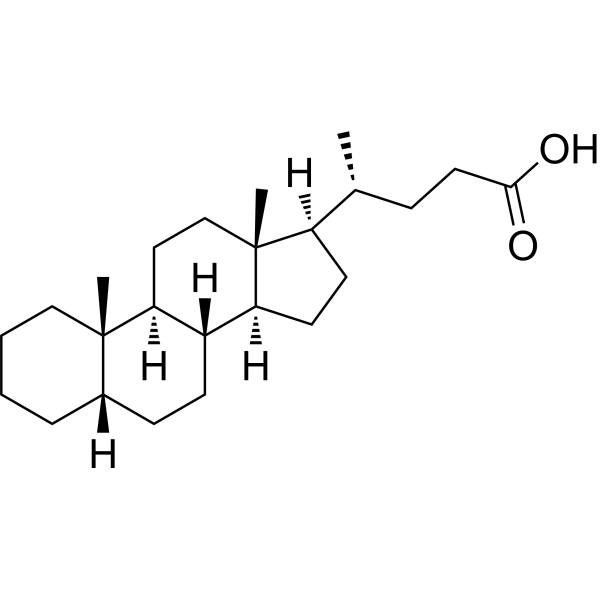
|